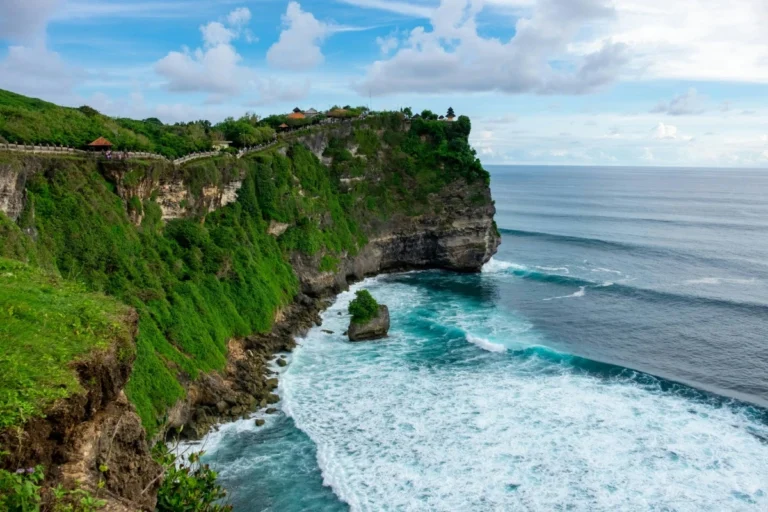How long Bali Belly lasts depends on the person, but in most cases, symptoms clear up within a few days. Bali Belly refers to indigestion or diarrhea that often affects tourists, especially those from places with stricter food and water hygiene standards, like Australia or the UK.
Since their bodies aren’t used to local bacteria or different food and water conditions, they’re more likely to experience it. Below is an explanation of how long Bali Belly typically lasts and what to expect.
Understanding Bali Belly
Definition
What is Bali Belly? Bali Belly is a common name for the stomach issues, like indigestion or diarrhea, that many travelers experience while visiting Bali. Medically known as traveler’s diarrhea, it’s usually caused by bacteria, viruses, or parasites from contaminated food or drinks.
While uncomfortable, Bali Belly often goes away on its own with rest, hydration, and light meals. Most people recover within a few days without needing serious treatment. Bali Belly isn’t directly contagious, but it can spread through poor hygiene practices, such as sharing utensils or not washing hands properly. During the rainy season, the risk increases due to potential water contamination, making it important to stay extra cautious.
Symptoms:
Bali Belly symptoms can vary, but here are the most common ones to watch out for
- Diarrhea
This is the main symptom of Bali Belly, usually watery and frequent, sometimes hard to control. In some cases, it can include mucus or light traces of blood. The biggest risk is dehydration, so it’s important to stay hydrated and replace lost electrolytes. - Nausea
Nausea often comes with stomach infections. It can be mild or strong enough to affect your appetite, and usually happens before or along with vomiting. If it lasts too long, it can make you feel weak and make it harder to drink fluids. - Vomiting
Your body’s way of trying to get rid of the bad stuff. Vomiting may happen a few times a day, depending on how bad the infection is. Too much vomiting can lead to a loss of fluids and electrolytes, which can make you feel even weaker. - Abdominal cramps
Cramps or stomach pain are common due to inflammation in the digestive system. The pain might come and go, and it often gets worse after eating or before using the bathroom. - Fever (in some cases)
Not everyone gets a fever, but it can show up if the infection spreads through the body. It’s usually mild to moderate (around 37.5–38.5°C), and might come with chills or fatigue. Fever often means your immune system is fighting something more than just a mild stomach bug.
Duration of Bali Belly
How long does Bali Belly lasts depends on how your body reacts and the cause of the infection.
- Typical Duration
Most people start to feel better within 24 to 48 hours. Your body usually fights off mild infections on its own, especially if you get plenty of rest and stay hydrated. As things settle, bowel movements become less frequent and stomach pain starts to ease.
- Longer Cases
Some cases can last up to 4 days, especially if the infection is from stronger bacteria or viruses. It’s not usually dangerous, but it can leave you feeling drained, more so if there’s vomiting or fever involved.
How long it takes to fully recover from a Bali Belly depends on the cause and how your body reacts, but most people start feeling better within 1 to 4 days with proper care.
Common Causes
There are a few common causes of Bali Belly, especially for travelers unfamiliar with the local food and water. Knowing what to avoid can help you stay healthy while figuring out where to stay on the island.
- Contaminated Food or Water
Eating raw or undercooked food like salads, seafood, or street snacks can lead to trouble. Tap water, ice cubes, and food stored too long or served in unhygienic places are common sources of infection. This is the main reason many travelers get Bali Belly. - Bacterial Infections
Bacteria like E. coli or Salmonella often sneak in through food or water and cause symptoms like diarrhea, cramps, nausea, and even fever. Undercooked meat or unwashed veggies are the usual suspects. - Viral Infections
Viruses like Norovirus spread easily in tourist-heavy areas. You can catch it from contaminated food, water, or even shared surfaces like cutlery or door handles. It spreads fast in groups, think families or tour groups. - Parasites
Parasites like Giardia come mostly from contaminated water, like from rivers or unfiltered sources. They can cause long-lasting symptoms such as bloating, recurring diarrhea, and fatigue, and usually need proper medication to clear up.
Management and Treatment
- Hydration
Staying hydrated is the most important step. Sip water often, even if it’s just a little at a time. ORS (oral rehydration salts) or electrolyte drinks can help replace lost fluids. Avoid caffeine, alcohol, and sugary drinks they can make things worse.
- Medications
If you’re wondering how to cure Bali Belly fast, taking the right medication can help ease symptoms quickly. Anti diarrhea meds like loperamide may reduce bathroom trips (unless there’s fever or blood in the stool). Antacids can calm your stomach and help with nausea. If it’s caused by bacteria, doctors may prescribe antibiotics like ciprofloxacin or azithromycin. For parasitic infections, treatments like metronidazole are usually needed.
- Diet Tips
Stick to plain, easy to digest foods: white rice, bananas, toast, boiled potatoes, soup, or porridge. Avoid anything fried, spicy, or dairy based, especially if you’re sensitive. Stay away from raw fruits and veggies until you’re better. Once symptoms ease, reintroduce regular foods slowly.
- When to See a Doctor
Get medical help if symptoms don’t improve after 3 – 4 days, if you see blood in your stool, have a high fever, or can’t stop vomiting. Watch for signs of serious dehydration like feeling very weak, sunken eyes, not being able to pee, or not being able to eat or drink at all. Don’t wait especially if you’re far from a clinic or hospital.
Seeking Medical Help in Bali
If Bali Belly symptoms get worse, it’s important to seek medical help right away especially if you’re staying in busy areas or near Uluwatu hotels, where access to care is still within reach.
- Medical Facilities
Bali has several traveler-friendly clinics and hospitals with English speaking staff. Some trusted options include:- Siloam Hospitals – Kuta & Denpasar
- BIMC Hospital – Kuta & Nusa Dua
- International SOS – Jimbaran
- Ubud Care Clinic – Ubud
- Kasih Ibu Hospital – Kedonganan, Denpasar, Tabanan
These places are well equipped to treat mild to moderate cases and usually accept international travel insurance.
- Treatment Options:
If your condition is more serious, treatments may include:- IV Hydration – For those who are dehydrated from frequent vomiting or diarrhea.
- Lab Testing – To identify infections caused by bacteria, viruses, or parasites
- Medication – Including antibiotics, anti nausea, anti diarrhea, and fluids with electrolytes.
Many tourist clinics even offer hotel/villa visit services, so you can be treated without leaving your room.
- Emergency Contacts
- Ambulance & Medical Help: Call 118 or 119
- SOS Bali International (24/7): 📞 +62 361 710 505
How long does Bali Belly last depends on the cause and your body’s response, but most cases clear up in a few days with proper care. Still, it’s a real medical issue, so don’t hesitate to get professional help if symptoms get worse. Stay safe, stay hydrated, and once you’re feeling better, head to Tropical Temptation Beach Club, your go to spot for Bali’s best beach club vibes and trusted travel guide.




